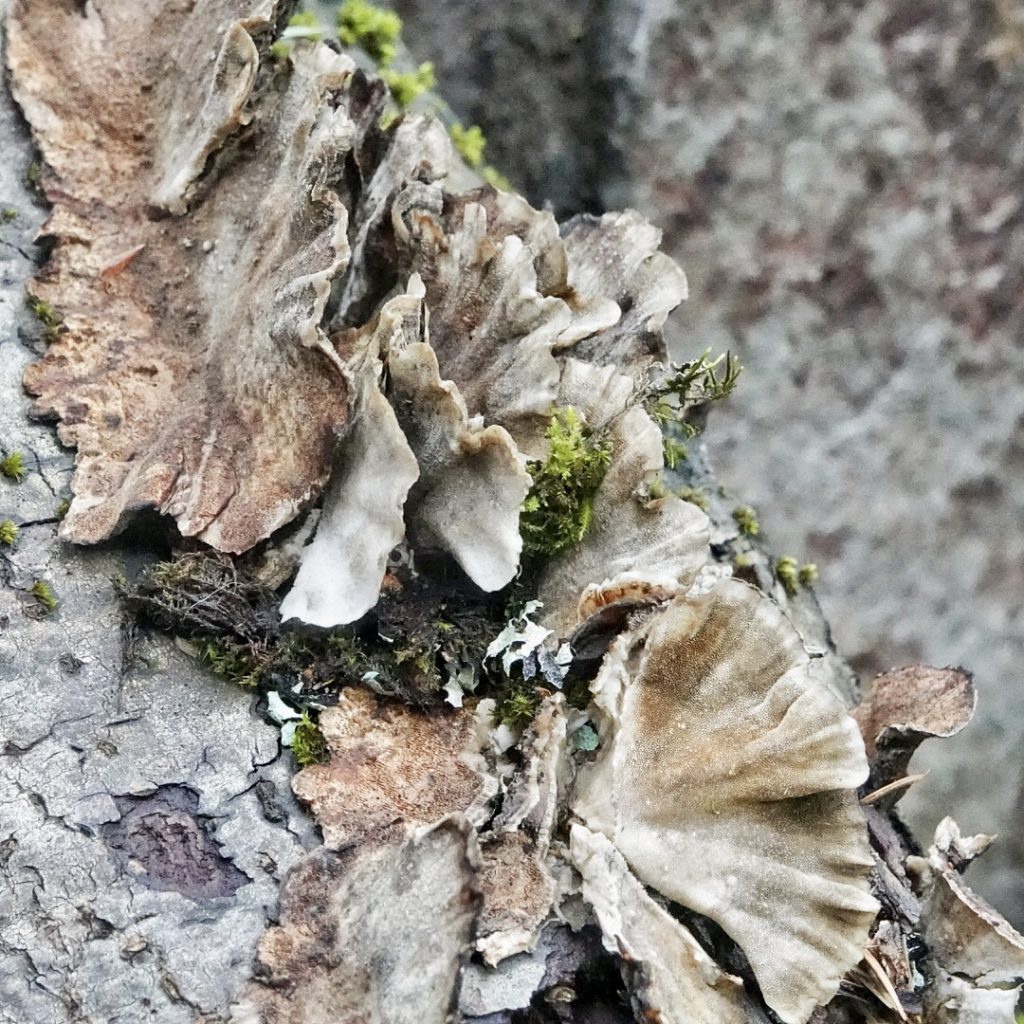
Not far from where I found the Stereum hirsutum on the trail to the upper Horsetail Falls in the Columbia River Gorge, I found another hairy bracket fungus, Trametes hirsuta, called, with an unsurprising lack of imagination, the Hairy Bracket. This one was on a dead alder. This whole area was severely burned by the Eagle Creek fire in September of 2017. Five years later the area is starting to recover, and the many downed logs and stumps are sporting an impressive array of saprobic fungi.
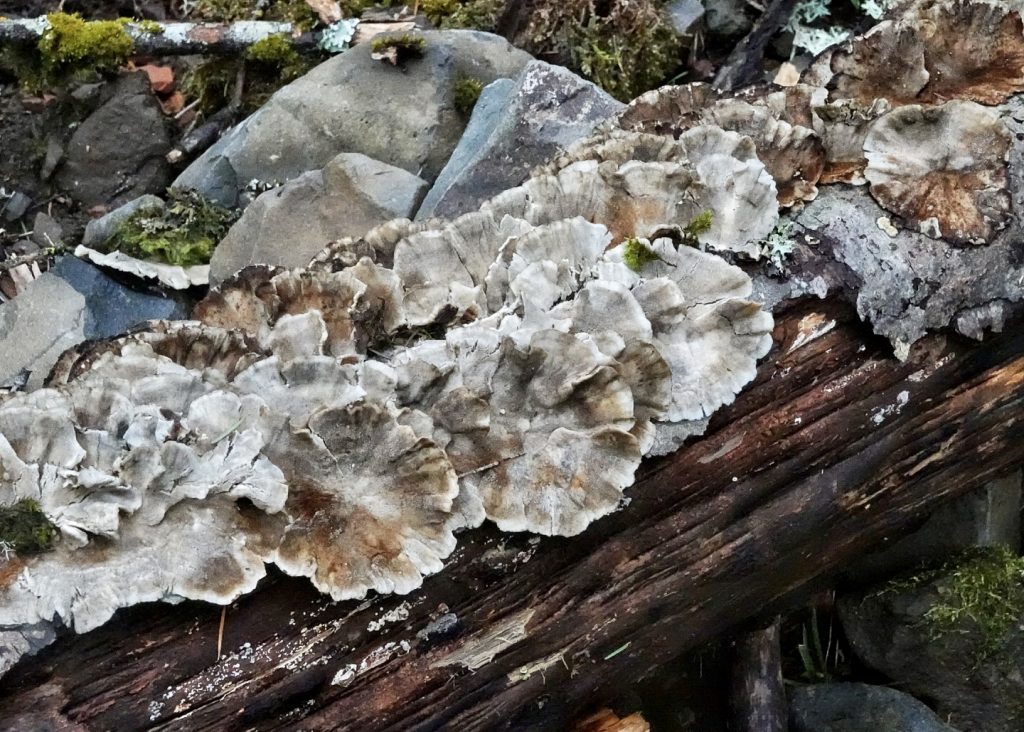
These Trametes hirsuta covered the alder log nearly end to end, overlapping so heavily that most of the log wasn’t even visible. They are not a pretty fungus like Stereum hirsutum or Trametes versicolor, or even a handsome one like Gloeophyllum sepiarium, but they appear to be a workhorse decomposer, to judge by their population density. And wood decaying fungi are an important element of the regeneration of a burned area such as this one, because they will help to break down and redistribute the nutrients in all of those logs, improving the health of the forest floor by replacing humus loads lost in the fire, and nutrients carried away by the ensuing rains. This in turn will help the plant communities to reestablish themselves, which will in turn attract pollinators and other insects to the area. The process will be slow, but eventually another beautiful forest, and a thriving ecosystem, will once again occupy these lands.
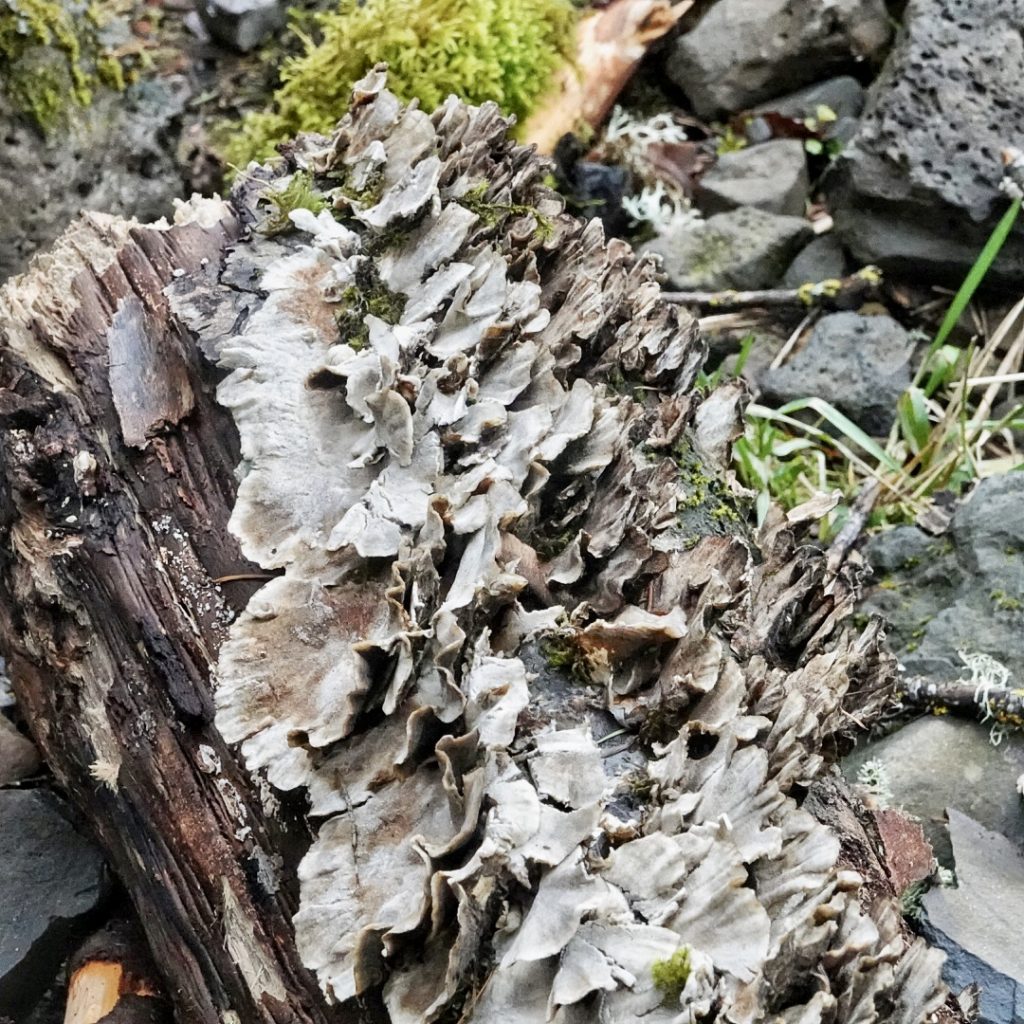
This mushroom is considered to be inedible because of its corky texture, and I can find no ethnobotanical references to its use. However, modern medicine has found some uses for its metabolites. An extract improves the ability of macrophages (effector cells in the immune system) to ingest and degrade dead cells, debris, tumor cells, and foreign materials. It is also proving a valuable resource for aryltetralin lignans, which are used in chemotherapeutic cancer treatments.
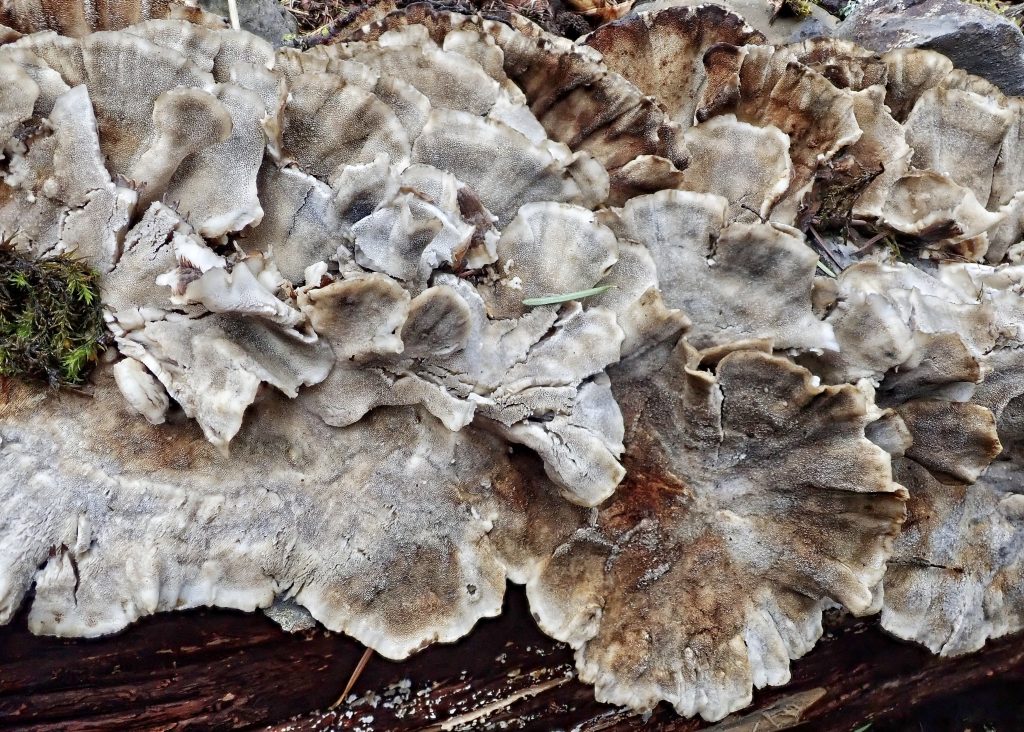
Description-Fairly large (up to 4” across) grey to white bracket fungus with a hairy dorsal surface and some amount of zonation; often has brown margins; ventral surface grey, darkening with age, 3-4 pores per mm; spore print white; spores cylindrical, 6-9μm by 2-2.5μm.
Similar species–Trametes versicolor has smaller pores, white ventral surface, and darker, more distinct zonation; T. pubescens is less hairy, less zonate, lacks brown on dorsal surface.
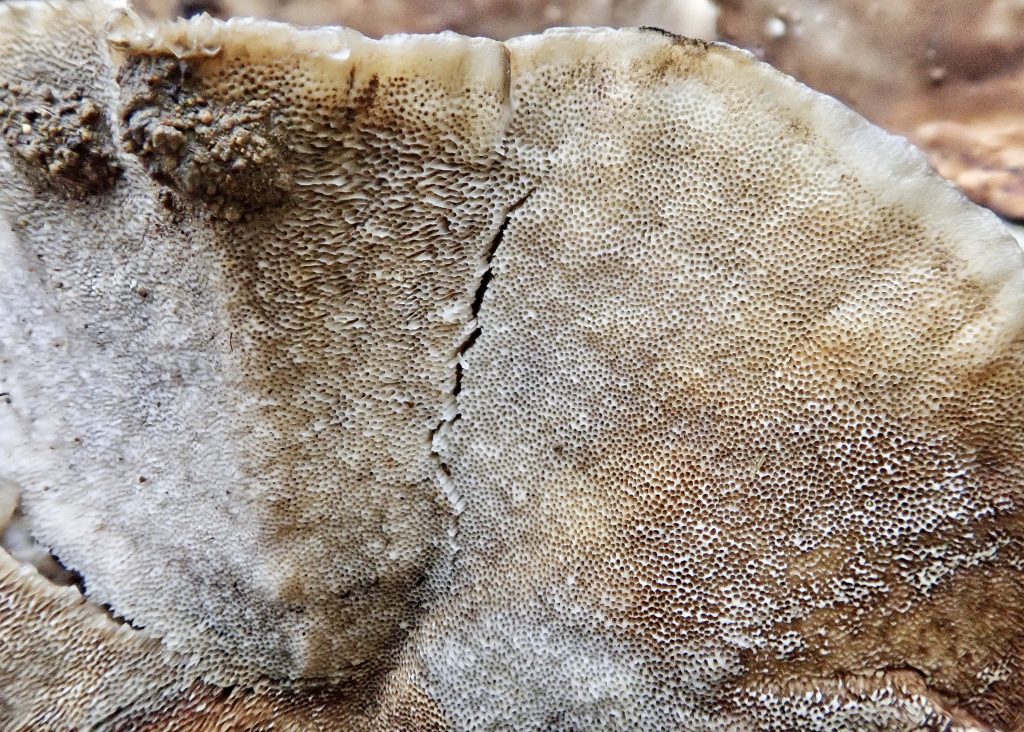
Habitat-saprobic on dead and dying logs, stumps and snags of hardwoods, and rarely on conifers.
Range-Temperate Northern Hemisphere; in our region it is found primarily west of the Cascades, and in montane regions on the eastside.
Reproductive timing-Spores are released in fall and winter, but the brackets persist year around.
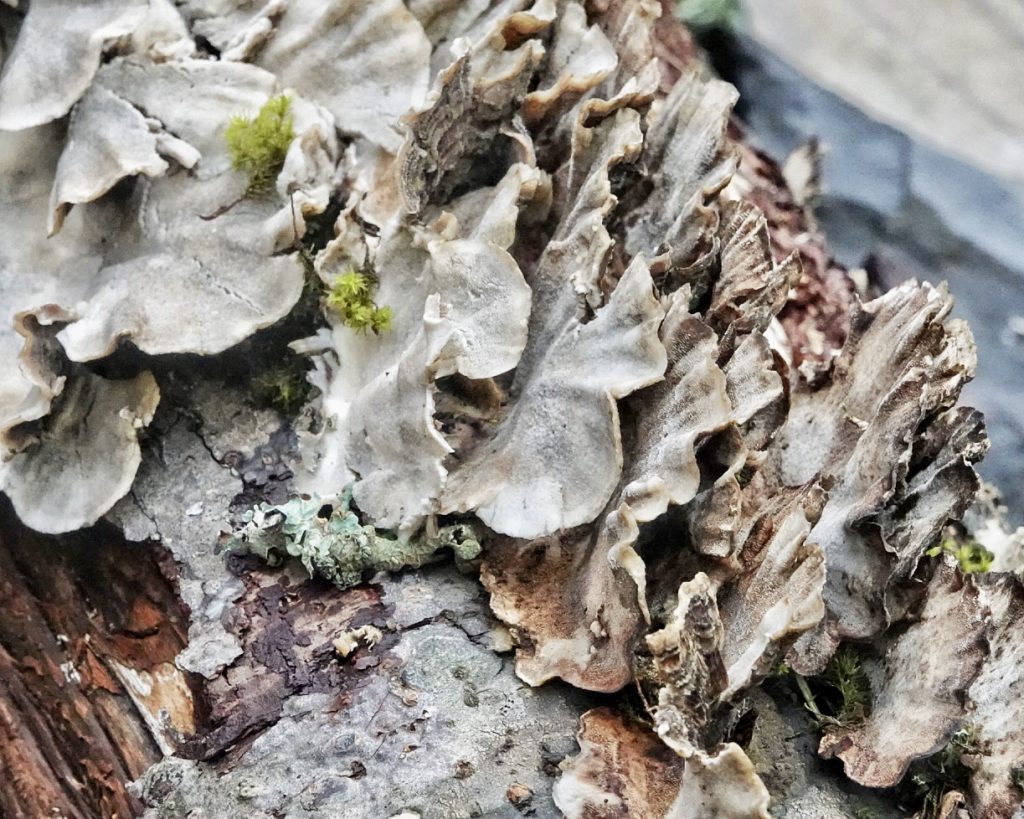
Eaten by-larvae of members of the family Ceratopogonidae in the the genus Culicoides, as well as larvae of flies in the families Platypezidae, Mycetophilidae, and Phoridae; springtails in the order Entomobryomorpha, as well as many other collembolans; probably also consumed by slugs, snails, and some beetles in the families Leiodidae, Staphylinidae, Endomychidae, Tenebrionidae, and Erotylidae amongst others; and small mammalian herbivores.
Etymology of names–Trametes is from the Latin words for ‘one who is thin’, and refers to the generally thin flesh of this genus. The specific epithet hirsuta is from the Latin for ‘hairy’, referring to the hairy dorsal surface.
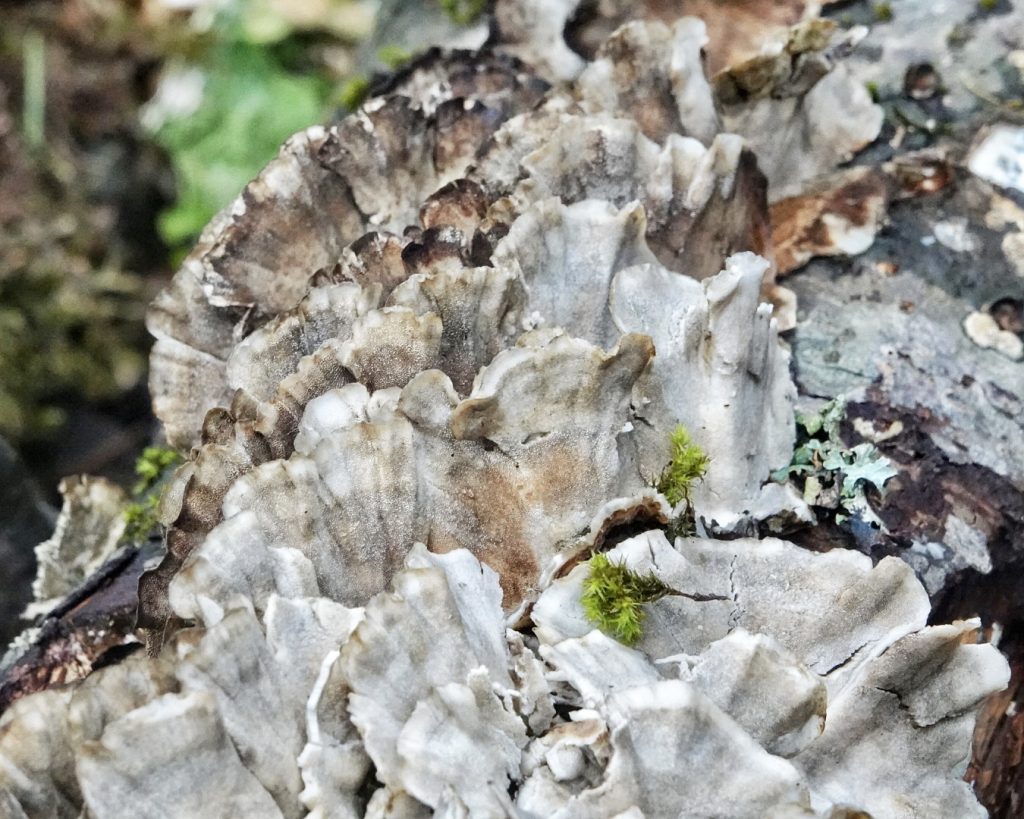
https://www.first-nature.com/fungi/trametes-hirsuta.php
https://ultimate-mushroom.com/poisonous/161-trametes-hirsuta.html
https://www.messiah.edu/Oakes/fungi_on_wood/poroid%20fungi/species%20pages/Trametes%20hirsuta.htm
https://www.mushroomexpert.com/trametes_hirsuta.html
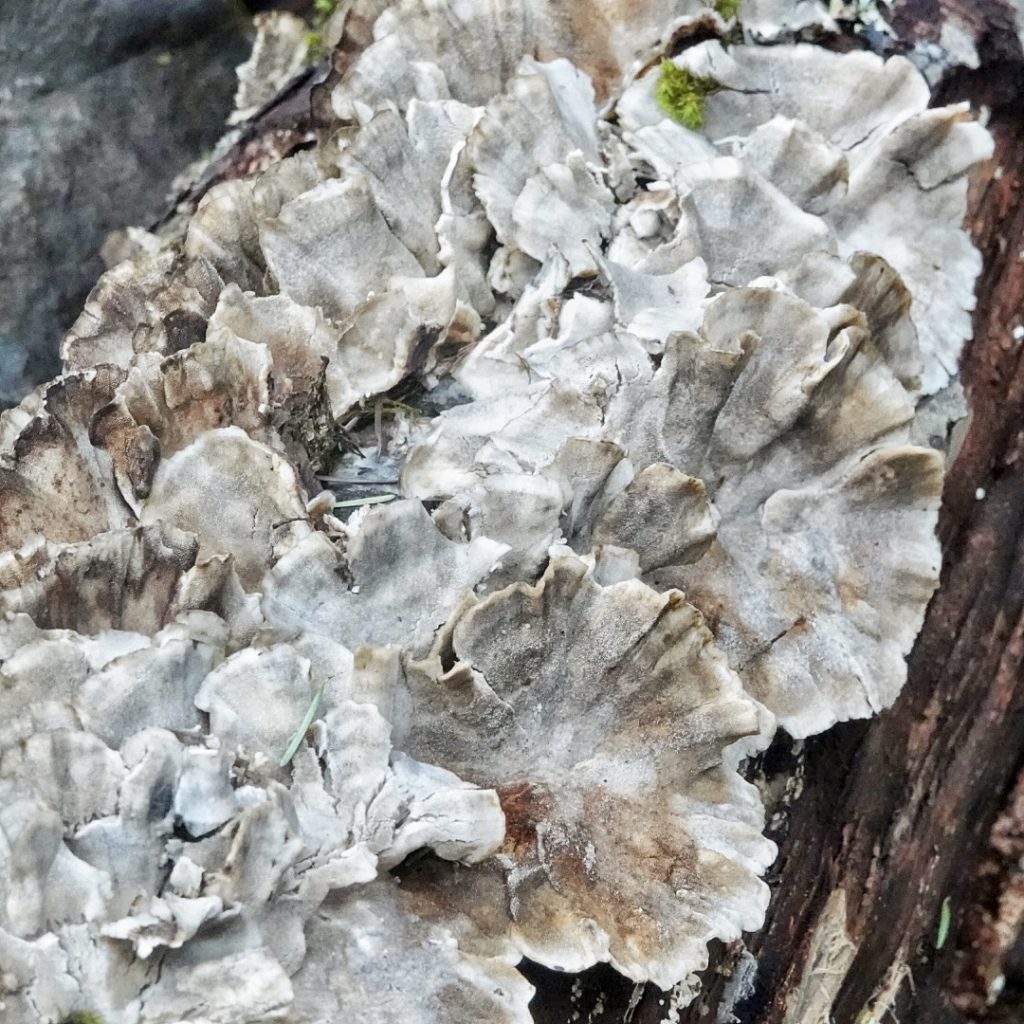
There’s something wonderfully congenial about the following: “They are not a pretty fungus like Stereum hirsutum or Trametes versicolor, or even a handsome one like Gloeophyllum sepiarium, but they appear to be a workhorse decomposer, to judge by their population density.”
Also, note: Trametes versicolor has smaller pores, white ventral surface, and darker, more distinct ZONATION [not donation];
Thanks, Trevor! I need to hire a better proof reader than Dan😏